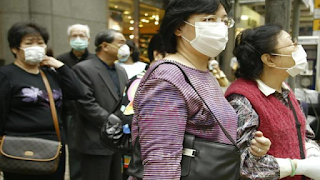This infection of the small intestine is transmitted primarily by drinking water or eating food containing the feces of an infected person. Worldwide about 5 million people are affected and over 100,000 die from Cholera every year.
Smallpox
After the vaccination campaigns of the 20th century, smallpox has become one of two infectious diseases that have been declared as completely eradicated (the other being rinderpest). Throughout history, however, small pox has claimed numerous lives and just in the 20th century, prior to vaccination, the death toll was estimated at nearly 500 million.
Yellow Fever
Transmitted by the bite of female mosquitoes, this disease is found in Africa and South America. It typically involves fever, chills, anorexia, nausea, muscle pain (with prominent backache) and headache, but in most cases subsides after several days. Due to warfare and social disruption across Africa, there has seen a resurgence since the 1980s.
Tuberculosis
Usually attacking the lungs, this disease is spread by airborne saliva. The classic symptoms of active tuberculosis infection are a chronic cough with blood-tinged sputum, fever, night sweats, and weight loss. Today some estimates put nearly one third of world down as having some form of tuberculosis.
Influenza
Commonly known as the flu, influenza is usually transmitted through the air like tuberculosis but sometimes through direct contact with contaminated surfaces. Because the virus can be inactivated by soap, however, frequent hand washing reduces the risk of infection.
Diarrhea
A common cause of death in third world countries and the second most common cause of infant deaths worldwide, the loss of fluids through diarrhea can cause dehydration and electrolyte disturbances such as potassium deficiency or other salt imbalances.
Perinatal Complications
Each year, about 500,000 women die worldwide from complications related to pregnancy and childbirth, including severe bleeding/hemorrhaging, infections, unsafe abortions, obstructed labor and eclampsia, and more than 90 percent of maternal deaths occur in Asia and sub-Saharan Africa.
Whooping Cough
Technically known as Pertussis, this highly infectious disease is known in some countries as the “cough of 100 days”. It is estimated that the disease currently affects 48.5 million people yearly, resulting in nearly 295,000 deaths
Ebola
Deriving its name from the Ebola River in Republic of the Congo, where it was first found, its victims typically suffer fevers, muscle weakness, and other symptoms that progress to severe bleeding, both internal and external, that eventually causes them to bleed to death. Unfortunately there is no treatment as of yet. Currently, we are experiencing what some are claiming to be the deadliest and worst outbreak of the disease in history.
Tetanus
Tetanus is a medical condition characterized by a prolonged contraction of skeletal muscle fibers. Infection generally occurs through wound contamination and often involves a cut or deep puncture wound. As the infection progresses, muscle spasms develop in the jaw (thus the name “lockjaw”) and elsewhere in the body.
SARS
A viral respiratory disease in humans, the last known case of the outbreak occurred in June 2003. SARS is not claimed to have been eradicated, however, as it may still be present in its natural host reservoirs (animal populations) and may return to the human population.












No comments:
Post a Comment